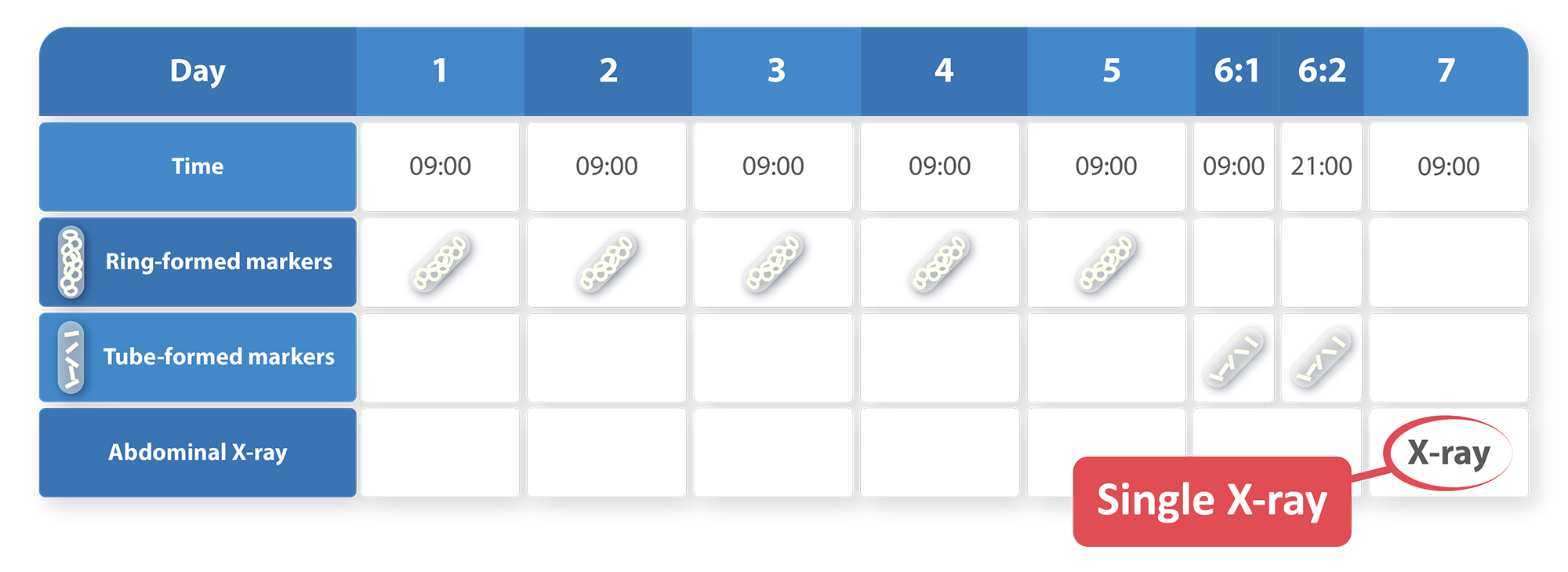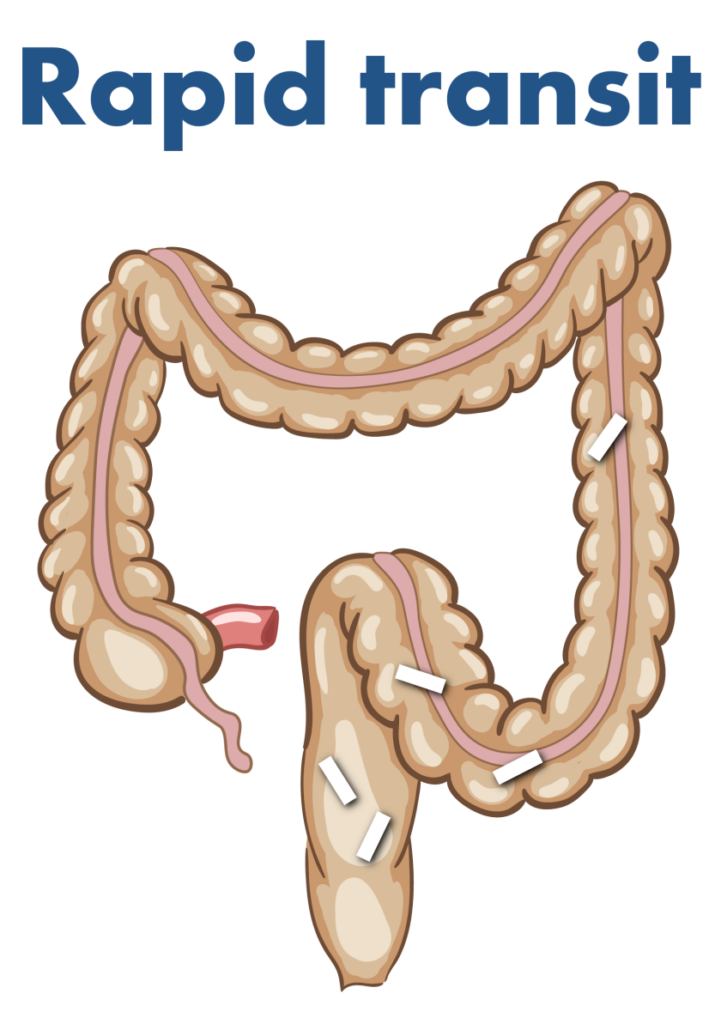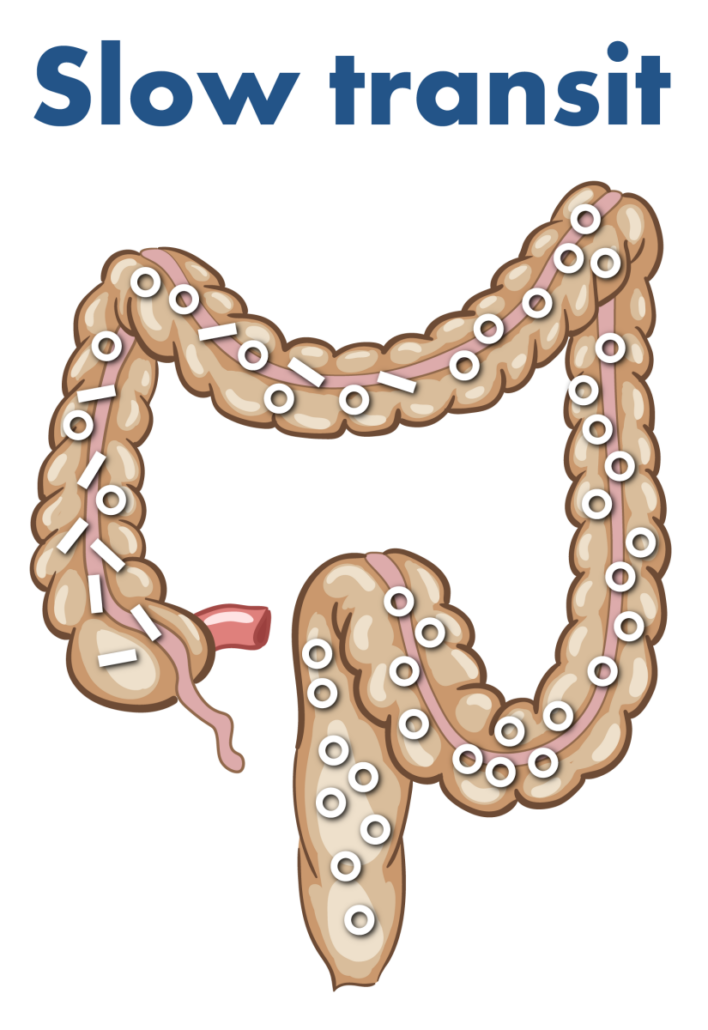Directions for Use
The patient swallows in total ten (10) Transit-Pellets radiopaque markers per day contained in seven (7) HPMC capsules for six consecutive days. The capsules dissolve in the gut and will release the markers and the markers will pass out with faeces. During the test week, the patient continues with his/her ordinary diet but must avoid medications known to affect GI motility.
One (1) capsule is swallowed day one thru day five. On day six one (1) capsule is swallowed in the morning, 24 hours prior to X-ray, and one (1) capsule is swallowed in the evening, 12 hours prior to X-ray. See schedule for marker intake below. It is important that the markers are ingested every day exactly as described. The interval between first marker intake and the X-ray must be six days (approx. 144 hours).
The principle for the execution of colonic transit test with Transit-Pellets method and Transit-Pellets™ radiopaque markers:
Times specified above are examples only.
The radiology examination should be scheduled 12 hours after the evening dose day six.
Radiology examinations should be scheduled at a time that conforms to the time of the last marker intake, i.e. 12 hours after the last dose was ingested on day six, which is prerequisite for an accurate measurement of colonic transit time with Transit-Pellets method.
Based on the number of retained markers and their position in colon (Figure 1) a colonic transit time is calculated and compared to reference values (See Reading the results). Note that all markers, regardless of shape, contribute to the final value.
Figure 1. Illustration (Source: Medifactia) of the movement of the medical device Transit-Pellets through the colon, and how the transit time is calculated from the number of pellets retained.
Tube-formed markers day six
The markers on day six have a different shape. If correctly taken, these markers should be located mainly proximal to the ring markers in the colon. If transit is slow, these markers are located in caecum-ascending colon and help to delineate this segment. The tube-formed markers can also provide important information in case of rapid transit.
For further information, please see Clinical Instruction for Use.









